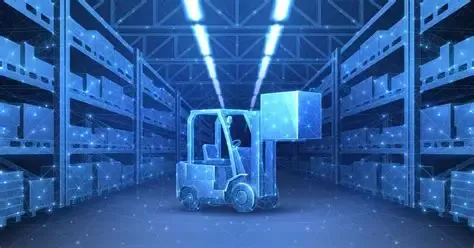
Introduction
With environmental concerns rising and regulatory pressures increasing, businesses are expected to go green. Warehouses are a major source of energy consumption and waste — and that means they have huge potential to drive sustainability.
Key Areas for Sustainable Improvement
Energy Efficiency
LED lighting
Motion sensors
Solar panels on warehouse roofs
Smart HVAC Systems
Use AI to regulate temperature based on occupancy and weather conditions
Eco-Friendly Construction & Design
Recycled materials for building structures
Skylights for natural light
Reflective roofing for heat control
Green Packaging
Switch to biodegradable, recycled, or reusable packaging
Minimize packaging sizes to reduce waste
Waste Management
Introduce clear recycling programs
Reduce overstock and expired product wastage using predictive inventory systems
Sustainable Transportation
Electrify delivery fleets
Promote carpooling or bike options for warehouse staff
Use route optimization to reduce fuel use
Certifications That Matter
LEED (Leadership in Energy and Environmental Design)
ISO 14001 (Environmental Management Systems)
Consumer Expectations Are Changing
Modern consumers prefer companies that align with their environmental values. Going green isn’t just good ethics — it’s good business.
Conclusion
Sustainability in warehousing goes far beyond compliance. It’s a smart investment in long-term cost savings, brand reputation, and operational efficiency. By adopting green practices today, warehouses can lead the change toward a cleaner future.
Powered by Froala Editor
Related Insights & Articles

July 14, 2025
At vero eos et accusamus et iusto odio dignissimos ducimus qui blanditiis praesentium
At vero eos et accusamus et iusto odio dignissimos ducimus qui blanditiis praesentium voluptatum deleniti atque corrupti quos dolores et quas molestias excepturi sint occaecati cupiditate non provident, similique sunt in culpa qui officia deserunt mollitia animi, id est laborum et dolorum fuga. Et harum quidem rerum facilis est et expedita distinctio. Nam libero tempore, cum soluta nobis est eligendi optio cumque nihil impedit quo minus id quod maxime placeat facere possimus, omnis voluptas assumenda est, omnis dolor repellendus. Temporibus autem quibusdam et aut officiis debitis aut rerum necessitatibus saepe eveniet ut et voluptates repudiandae sint et molestiae non recusandae. Itaque earum rerum hic tenetur a sapiente delectus, ut aut reiciendis voluptatibus maiores alias consequatur aut perferendis doloribus asperiores repellat.
Powered by Froala Editor

July 18, 2025
Global E-Commerce Trends Reshaping the Supply Chain in 2025
Introduction
E-commerce continues to grow at an unprecedented rate, influencing how products are manufactured, stored, shipped, and delivered. As consumers expect faster, cheaper, and more convenient services, supply chains must evolve to keep up. The trends shaping e-commerce today are directly impacting how warehouses and logistics operations function.
1. Rise of Hyperlocal Fulfillment
To reduce delivery times, companies are building micro-fulfillment centers close to major urban areas. These small, tech-enabled warehouses reduce the last-mile burden and enable same-day or even 1-hour deliveries.
2. Omnichannel Supply Chains
Retailers now sell through websites, apps, marketplaces, and physical stores — all integrated into a single inventory and fulfillment system. This omnichannel model requires real-time visibility across all platforms, and flexible logistics that can respond to orders from anywhere.
3. Reverse Logistics Growth
As online returns grow (especially in fashion and electronics), the demand for efficient reverse logistics is rising. Brands are investing in return hubs, automated inspection systems, and resale programs.
4. Eco-Conscious Consumer Demands
Customers are increasingly favoring brands that offer green delivery, minimal packaging, and carbon-neutral operations. This is pushing logistics firms to adopt electric fleets and route optimization algorithms.
5. Personalization Through Data
Data analytics and AI allow for personalized delivery preferences, predictive shipping (based on past orders), and even dynamic packaging — helping improve both speed and customer satisfaction.
Conclusion
E-commerce isn’t just transforming online shopping — it’s redefining global supply chains. Warehouses and logistics providers that adapt to these new trends will gain a competitive edge and remain relevant in the fast-moving digital economy.
Powered by Froala Editor

July 18, 2025
Top 5 Warehousing and Logistics Market Trends to Watch in 2025
Introduction
The warehousing and logistics sector is experiencing a surge in innovation. Driven by demand for faster delivery, higher efficiency, and sustainability, 2025 brings a new wave of transformation. Businesses that understand these trends can stay ahead in a competitive market.
1. Warehousing-as-a-Service (WaaS)
Just like cloud computing, on-demand warehousing allows businesses to rent space only when needed. Startups and SMEs are using WaaS platforms to scale operations without heavy investment.
2. Rise of Urban Logistics Hubs
Due to urbanization, the focus is shifting toward small-scale warehouses in cities to support last-mile delivery. This trend helps reduce transit time and supports instant delivery models like food and grocery.
3. Autonomous Material Handling
Forklifts, pallet movers, and conveyor belts are becoming smarter. AMRs (Autonomous Mobile Robots) and AGVs (Automated Guided Vehicles) are becoming mainstream in large and medium warehouses.
4. Real-Time Data & Predictive Logistics
With IoT sensors and AI systems, warehouses can now predict inventory needs, identify maintenance issues early, and track shipments at every stage — offering full visibility.
5. Labor Shortage Driving Tech Adoption
The global shortage of warehouse workers is forcing companies to invest in automation, wearable tech (like smart glasses), and robotics to maintain performance and output.
Conclusion
The warehousing and logistics market is no longer just about space — it’s about agility, speed, and intelligence. These trends show where the industry is headed and how businesses can evolve to meet new expectations.
Powered by Froala Editor
